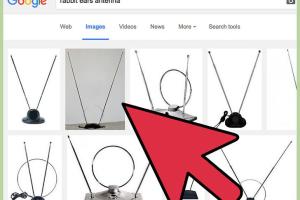Transform Your Home Wiring Into a Powerful TV and Radio Antenna

-
Quick Links:
- Introduction
- What You Need
- Understanding How It Works
- Step-by-Step Guide
- Real-World Case Studies
- Troubleshooting Tips
- Expert Insights
- FAQs
Introduction
In an age where streaming services dominate, the simple pleasures of live television and radio still hold a special place in many households. However, poor reception can hinder the experience. What if you could harness the existing wiring in your home to improve signal reception? This guide will explore how to use your home wiring as a TV or radio antenna, offering a cost-effective solution to enhance your viewing and listening pleasure.
What You Need
- Coaxial cable
- Wire strippers
- Connectors (F-type connectors for TV, RCA connectors for radio)
- Grounding block (optional)
- TV or radio unit
- Access to your home’s electrical wiring
Understanding How It Works
Your home's wiring, particularly copper wiring, can act as an antenna because it conducts electromagnetic signals. When properly configured, your wiring can pick up broadcast signals from TV and radio stations, transforming your existing electrical infrastructure into a makeshift antenna.
Types of Signals
TV signals typically fall under two categories: over-the-air (OTA) and cable. Radio signals also vary, with AM and FM providing different frequencies. Home wiring can effectively capture these signals, especially in urban areas with strong broadcast towers.
Step-by-Step Guide
1. Assess Your Home Wiring
Before beginning, inspect your home’s wiring layout. Look for available coaxial cables and ensure they are in good condition. If you have an unfinished basement or attic, these areas often provide easy access.
2. Prepare Your Equipment
Gather all necessary equipment. Strip the ends of your coaxial cable and connectors as needed. Make sure you have sufficient length to reach your TV or radio unit.
3. Connect the Coaxial Cable
Attach one end of the coaxial cable to your TV or radio. If your home has multiple rooms wired for cable, you may be able to connect directly to these points. Otherwise, connect to the nearest outlet using the connectors.
4. Test the Signal
Once connected, power on your device and conduct a channel scan. This will help identify available channels. Adjust the positioning of the wires if necessary to enhance signal strength.
5. Fine-tune and Secure
For optimal performance, you may need to adjust your wiring configuration. Consider securing your connections and using a grounding block for safety. Ensure that there are no loose wires or connections.
Real-World Case Studies
Many homeowners have reported significant improvements in signal reception after implementing this method. For example, a family in Seattle transformed their living room by connecting their TV to existing wiring, which previously was used solely for a landline phone.
Troubleshooting Tips
If you encounter issues, here are some troubleshooting tips:
- Check all connections to ensure they are tight and secure.
- Move the coaxial cable away from other electrical devices that may cause interference.
- Try scanning for channels at different times of day when the signal may vary.
Expert Insights
Experts recommend understanding the layout of local broadcast towers before starting this project. Websites like FCC's DTV Antenna Tool can provide valuable information on signal strength in your area.
FAQs
1. Can I really use my home wiring as an antenna?
Yes, with the right setup, your home wiring can effectively capture TV and radio signals.
2. What type of wiring works best?
Copper wiring is ideal, as it conducts signals well. Coaxial cables are commonly used for TV connections.
3. Do I need an amplifier?
In some cases, an amplifier may be beneficial to boost weak signals, especially if you're far from broadcast towers.
4. Is this setup safe?
As long as you follow safety guidelines and ensure proper grounding, this setup is safe.
5. Can I use this method for satellite TV?
No, this method is specifically for over-the-air signals and local radio broadcasts.
6. How can I improve my reception further?
Experiment with the positioning of your wiring and try to eliminate interference from other electronics.
7. Will this work in rural areas?
Yes, but the effectiveness may vary based on distance from broadcast towers.
8. What if I don’t have coaxial cables?
You can use other types of cables, but coaxial is the most efficient for this application.
9. How long can I run the coaxial cable?
While longer runs can lead to signal degradation, generally, you can run coaxial cables up to 100 feet without significant loss.
10. Is professional installation recommended?
For those unfamiliar with electrical systems, professional installation may be advisable to ensure safety and optimal performance.